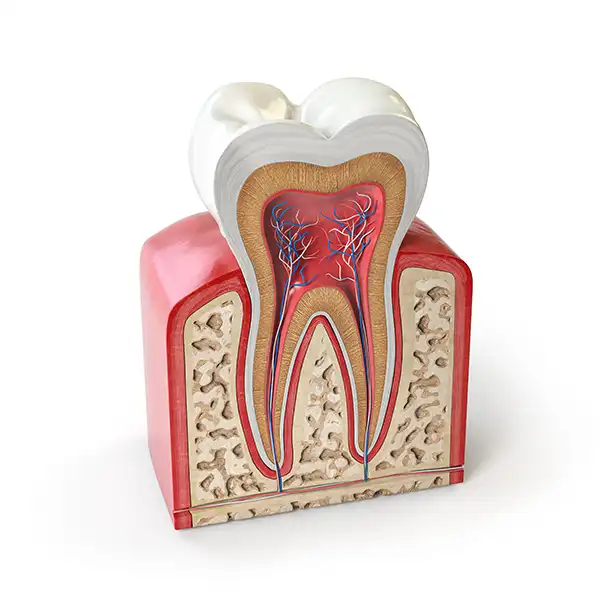Root Canals Many patients having a decayed or damaged tooth think that the only solution is to extract it, especially if it causes severe pain or has a sensitivity that does not seem to subside. However, it is possible for our team at The Strongsville Center for Cosmetic & Implant Dentistry to save your tooth by performing root canal therapy. In some cases, if the damage is not so bad, a filling or inlays and onlays can do the trick. In situations where a root canal cannot save the tooth, then extraction may be the only option. When you visit our team, we critically examine the tooth to see how badly it is damaged before recommending the right treatment plan. Many patients having a decayed or damaged tooth think that the only solution is to extract it, especially if it causes severe pain or has a sensitivity that does not seem to subside. However, it is possible for our team at The Strongsville Center for Cosmetic & Implant Dentistry to save your tooth by performing root canal therapy. In some cases, if the damage is not so bad, a filling or inlays and onlays can do the trick. In situations where a root canal cannot save the tooth, then extraction may be the only option. When you visit our team, we critically examine the tooth to see how badly it is damaged before recommending the right treatment plan. How Do You Know if You Need Root Canal Therapy?There are a few things that could indicate that your tooth requires an endodontic treatment such as root canal therapy. If inflammation or infection has occurred on the pulp due to deep decay or cracks and chipping in a tooth, a root canal could be the treatment you need. An injury to your tooth could also damage the pulp, even when you do not see any chipping or cracks. When you do not get inflamed or infected pulp treated, you could experience a lot of pain. In extreme cases, the root could develop an abscess. Look out for signs like severe pain occurring while chewing or biting, tender or swollen gums, pimples developing on the gums, darkening gums, and deep decay. All of these symptoms are an indication of possible pulp damage, so a root canal treatment may be necessary. In some instances, teeth have no pain and a necrotic pulp warrants a root canal treatment. We use a 3D x-ray to find hidden canals that could potentially lead to failure. The Procedure ItselfRoot canal therapy starts with an exam and taking X-rays to get an in-depth view of the tooth. There is often a common misconception that a root canal procedure can hurt. When properly anesthetized there should be no pain when having this procedure. Our dentist carefully numbs the tooth and makes a hole in the crown to access the pulp region. The next step involves cleaning the pulp and shaping the space to allow filling. Once the pulp has been cleaned and shaped, the dentist performs the filling procedure to fill the roots. A biocompatible material is used in the filling process. In a later appointment, the dentist will place a crown on the tooth, helping protect it and bring back its full function. A tooth that gets root canal treatment can survive like the others. Aftercare for Root Canal TherapyYou will want to consume soft foods that do not require heavy chewing such as eggs, yogurt, applesauce, and fish. Avoiding hard as well as hot foods is crucial because they could hurt the treated teeth. Until the effects of the numbing agents go away, you should avoid eating because you could bite your tongue and injure your mouth. You need to brush normally, twice a day. You also want to be careful about the areas where the treatment was done. Also, floss your teeth normally and make sure that you come in for regular checkups. Saving a tooth is always the best option if it is possible, rather than waiting for the damage to worsen, in which case you may need an extraction. Extractions demand that you get additional restorative procedures such as dental implants, bridges, or dentures. There is never a better replacement for natural teeth. Only your real teeth are best for your bite function and appearance. If you think you require root canal therapy, our team is highly trained and equipped to offer the procedure. Contact us today at The Strongsville Center for Cosmetic & Implant Dentistry to request an appointment with our team. Call us at (440) 580-1028. |

Contact Information11925 Pearl Rd #206 Strongsville, OH 44136-3343 (440) 580-1028 info@drweiser.com Follow Us |